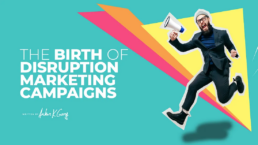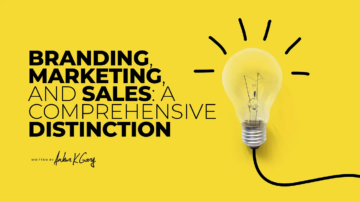In a world inundated with ads at every turn, standing out becomes an art. Enter disruption marketing — a concept that turned traditional advertising on its head. From its inception, disruption marketing was not merely about being seen, but about being remembered. But where did it all begin? Let’s delve into the fascinating journey of how disruption marketing campaigns first took the stage.
The Old World of Advertising
Before the birth of disruption marketing, the advertising world was largely predictable. Campaigns focused on a product’s features or benefits, appealing to what was presumed to be the consumers’ desires or needs. The playbook was well-defined: choose a medium (print, TV, radio), craft a message, and disseminate. But as the markets became saturated, this strategy was less effective in making a lasting impression. There was an undeniable need for change.
Recognizing the Paradigm Shift
The late 20th century saw significant shifts in culture, technology, and consumer behavior. The rise of the internet, coupled with an increasingly globalized world, meant that consumers were exposed to a myriad of choices and messages. In this complex maze, brands needed a strategy to break the mold and make a splash. This necessity was the mother of disruptive innovation in marketing.
The First Stirrings of Disruption
The seeds of disruption marketing were sown in the 1990s. One of the earliest proponents was Jean-Marie Dru, the Chairman of TBWA, an international advertising agency. In his seminal book, “Disruption”, Dru laid out a methodology where he advocated for breaking conventions and challenging the market norms. This wasn’t about change for change’s sake but about finding novel, strategic methods to create brand value and engagement.
Iconic Campaigns That Paved the Way
Several brands took the leap into disruption marketing, becoming pioneers in the process.
- Apple’s “1984”: Directed by Ridley Scott, Apple’s advertisement for the Macintosh computer aired during the Super Bowl in 1984. Drawing parallels with George Orwell’s dystopian novel, Apple positioned itself as the beacon of hope in a world dominated by IBM. It wasn’t just an ad; it was a cinematic experience.
- Red Bull Stratos Jump: Instead of traditional campaigns talking about energy and adrenaline, Red Bull took it a step further. In 2012, they sponsored Felix Baumgartner’s jump from the stratosphere. This event not only aligned with their brand image but also created history, making it an advertising masterstroke.
- Dove’s “Real Beauty”: In a world where cosmetic advertisements always portrayed a certain kind of beauty, Dove chose to break the norm. Their campaign showcased real women, of all shapes and sizes, challenging the standard beauty conventions. It was a statement, and it resonated.
The Impact
Disruption marketing’s beauty is that it doesn’t just sell a product; it sells an experience, an emotion, a story. Brands that recognized this managed to create meaningful relationships with their consumers, rather than just transactional interactions.
Conclusion
The birth of disruption marketing campaigns is a testament to the ever-evolving nature of advertising. It’s about recognizing the change, being bold, and crafting a narrative that resonates. In an age where consumers are more informed and discerning, disruption marketing remains more relevant than ever, challenging brands to think outside the proverbial box and truly engage their audience.




